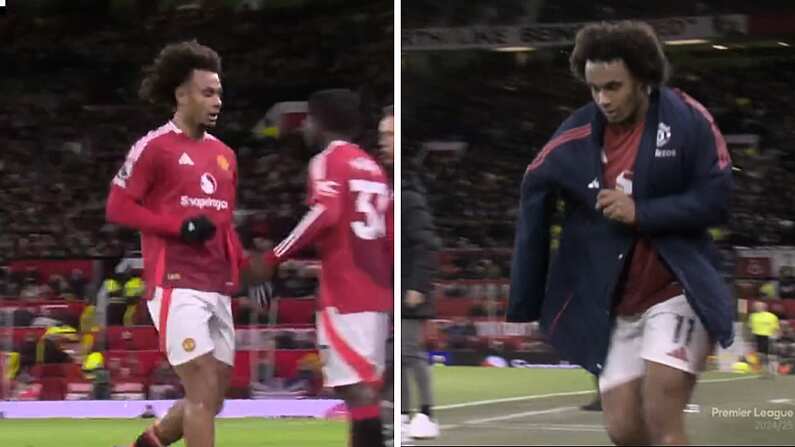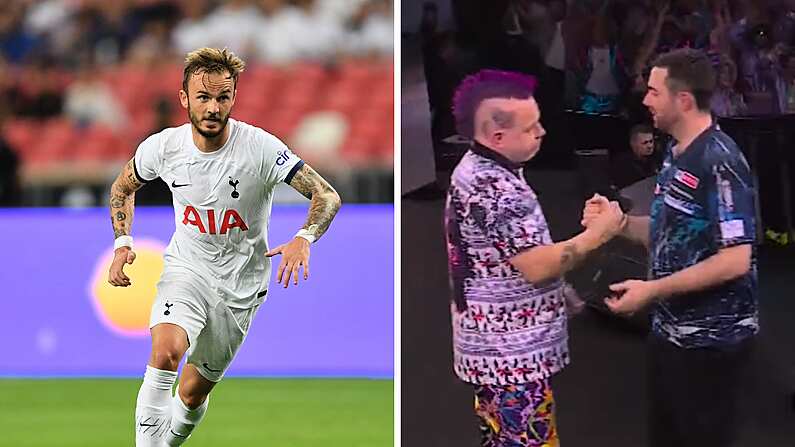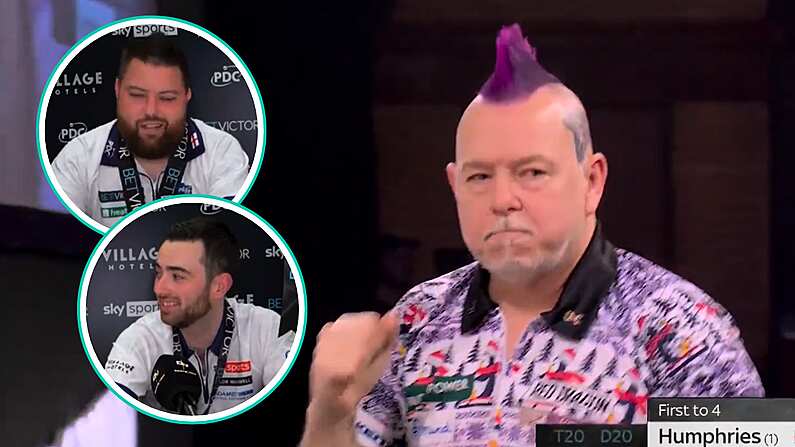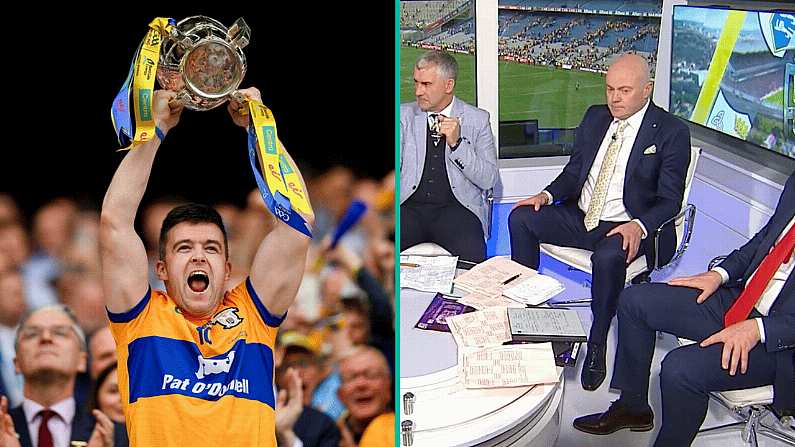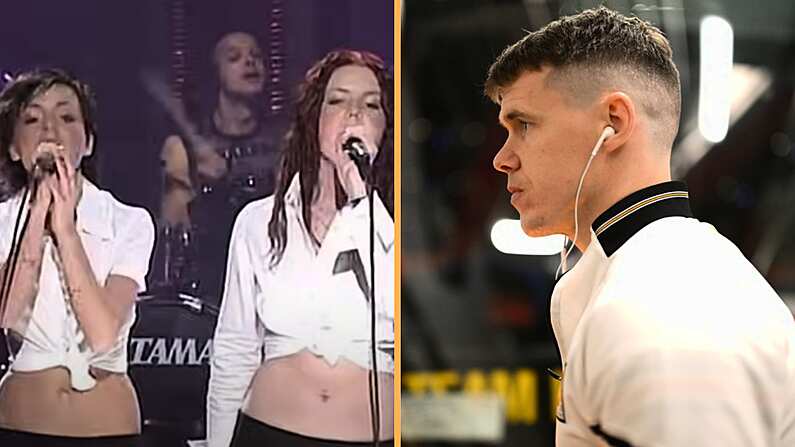Now that the AFC and NFC Championship games are set, we've decided to further your knowledge of America's game. If your still at the stage where you turn on Sky Sports and are wondering why the referee hasn't blown for a forward pass we do have a NFL Crash Course to ease you into the Championship games.
If your happy enough with your general NFL knowledge but would like to take your expertise to the next level, then this guide will give you everything you need to know about player positions, terminology and offensive plays.
Here's a basic set-up at the line of scrimmage or neutral zone.
There are 11 players allowed on each side in the field of play at any one time.
Offense:
Offensive Line:
When lining out the offensive line must have 7 players within a certain distance of the line of scrimmage. A team is allowed no more than four players behind this line.
Center (C): Starts each play by snapping the ball to the QB. Located at the center of the line of scrimmage. Tackles after snap and protects the QB.
Left/Right Offensive Guard (G): Tacklers and blockers they line up either side of the Center.
Offensive Tackles (T): Located outside the guards similar to them act as tacklers and blockers.
Backs and Receivers
Quarterback: The most important player on the field he takes the ball from the Center on each play. He's the play-maker of the team. He relays any plays called out by the coach to the rest of the offense in the huddle.
Can line up in three different positions pre-snap.
Under Center: When he lines up right behind the Center.
In The Shotgun: Lines up a few yards behind the Center with the RB right beside him
Pistol Formation: Again a few yards behind the center except the RB is further behind
Running Back (RB): Their main objective is to run the ball, by running wide or finding gaps at the line of scrimmage.
Tailback/Halfback: Light and fast they do most of the yard making runs.
Fullback: Larger and heavier they can block for the TB/HB.
Wide Receiver (WR): Their main objective is to find space and catch passes from the QB.
Tight End (TE): A mix between a linebacker and a receiver they can catch and tackle.
Defense:
Defensive Line:
Defensive Tackle (DT): Also known as a defensive guard, lines up right in the centre, directly across from the ball. Runs at the passer and tries to disrupt plays.
Defensive End (DE): Line up on the outside of the D line, beside the DT. Their job is is to try tackle the QB or ball carrier.
Linebackers (LB): Positioned behind the D line, these are the best tacklers on the field and make decisions on defensive plays. They must stop run plays and pass plays.
There are two types of linebacker:
Middle/Inside Linebacker: The QB of the defense, takes charge of play calls
Outside Linebacker: Responsible for any plays outside the MLB area.
Defensive Backs:
Safety (S): Furthest line of defensive they try to intercept ling pass plays.
Cornerback (CB): Defend the wide receivers.
Common Terminology You Might Not Know
(blitz formation)
Assuming that the part-time NFL fan has a grasp on most of the basic terms used during games, here's a few that you may have heard but aren't completely sure about.
Backfield: Offensive players lined up behind the offensive line. QB,RB.
Blitz: When the defense overloads the defensive line with linebackers and defensive backs in an attempt to rush the QB.
Drive: The series of plays when the offense has the ball. Similar to an attack in football.
Down: A period of play from when the ball is put in play to when its called dead.
Fair Catch: The equivalent of a mark in rugby, player signals he won't run with the ball, and can't be tackled
Hole: A gap in the line of scrimmage.
Lateral: A pass that goes backwards or laterally.
Lead block: A player who runs ahead of the ball carrier preventing him from being tackled
Line Of Scrimmage: The imaginary line where the ball is placed. Players stand either side of it at the start of each play.
Pass block: Player blocking moves to the side and tries to create space for the ball carrier to pass.
Pocket: The protected area made around the QB by the offensive line.
Run Block: The player steps forward in an attempt to push a defensive player out of the path of the ball carrier.
Rushing: To run with the ball, or run to tackle a QB.
Sack: When a defensive player tackles the QB behind the line of scrimmage.
Safety: A two-point score that when the defense tackles an offensive player in their own end zone.
Special Teams: The 22 players (11 defense, 11 offense) who are on the field during kicks and punts.
How a QB may call a play and verbalize a play:
Offensive Plays:
There's definitely at least one occasion where you've got your hands on an American football, called out some random numbers before butchering a pass that only makes it about 10 yards, and has your shoulder hurting for the rest of the day.
We'll here's a quick example of a play call that a QB might verbalize, and the explanation behind it.
In the huddle a QB might call out "686 Pump F-Stop on two".
Here's the breakdown!
- 686: These are passing routes predetermined by the offense in practice, the receivers (x,y,z) should take. So on this play X receiver runs 6 , Y receiver runs 8 route and Z runs another 6 route.
- F-Stop: Refers to the fullbacks pass route
- Two: refers to the count on which the QB wants the ball snapped to him. in other words the center will snap to him on the second sound.. for example he might call Green 80, Green 80, hut...hut! Green 80 in this case means nothing but could signal a play change from the QB.
Here's some vintage 1990s Brett Favre to take us through the play calling.
Screen Pass:
In the classic screen the QB pretends to hand the ball off to the running back only to keep it and throw it to his receiver, who’s typically just a few yards to the side.
Draw Play
The draw play starts with the QB looking like he is going to throw the ball down-field, only to hand it off to the running back or run it himself.
Play-Action Pass:
This is when the offense pretend to run the ball by faking a hand-off to the RB, but are instead trying to open up a passing opportunity. The play could be considered to be the opposite of a 'Draw Play'.
Finally if you're a supporting the 49'ers in the Divisional Championship this a term you need to know, as Colin Kaepernick is turning into a master of the play.
The Read-Option:
The Read-Option involves the offense leaving one defensive player free and unblocked. The ball carrier, typically the QB, then makes a read on the basis of the unblocked defensive player's reaction.
If the defender stands still and looks to see who has the ball the QB will hand it off because the offense will have numbers on the play side.
In the other scenario, if the defender commits to a run on the RB or hits the line of scrimmage the QB will keep the ball and run to outside, because the offense will have a numbers advantage. Deciding on whether the QB runs himself or hands it off is the option.
The draw play starts with the QB looking like he is going to throw the ball down-field, only to hand it off to the running back or run it himself.
Play-Action Pass:
This is when the offense pretend to run the ball by faking a hand-off to the RB, but are instead trying to open up a passing opportunity. The play could be considered to be the opposite of a 'Draw Play'.
Finally if you're a supporting the 49'ers in the Divisional Championship this a term you need to know, as Colin Kaepernick is turning into a master of the play.
The Read-Option:
The Read-Option involves the offense leaving one defensive player free and unblocked. The ball carrier, typically the QB, then makes a read on the basis of the unblocked defensive player's reaction.
If the defender stands still and looks to see who has the ball the QB will hand it off because the offense will have numbers on the play side.
In the other scenario, if the defender commits to a run on the RB or hits the line of scrimmage the QB will keep the ball and run to outside, because the offense will have a numbers advantage. Deciding on whether the QB runs himself or hands it off is the option.


